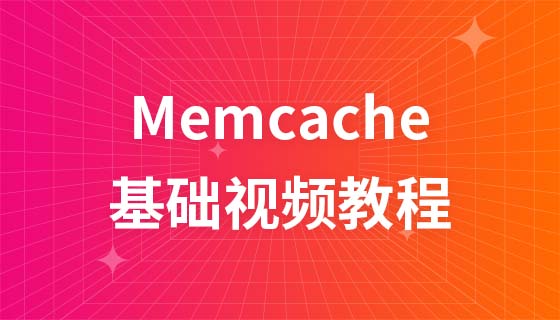
在深入探讨问题之前,理解 electron 的进程架构至关重要。electron 应用主要由两种类型的进程组成:
主进程 (Main Process): 主进程是 Node.js 运行时环境,负责管理应用程序的生命周期、创建和管理浏览器窗口、处理系统事件、与操作系统进行交互等。它拥有完整的 Node.js API 访问权限,可以执行文件系统操作、网络请求、子进程管理等。
渲染进程 (Renderer Process): 每个 BrowserWindow 实例都运行在一个独立的渲染进程中。渲染进程本质上是一个带有 Node.js 能力的 Chromium 浏览器实例,用于显示用户界面。然而,为了安全和性能考量,渲染进程默认情况下并不会直接暴露 Node.js API(如 require、process、fs 等)给网页内容。它的上下文与普通网页环境更为接近。
当尝试在 Electron 渲染进程中直接使用 Node.js 的 require 语句导入模块时,通常会遇到 require is not defined 的错误。例如,以下代码片段在渲染进程中执行时就会失败:
// get_screenshot.js (在 Electron 渲染进程中加载)
const util = require('util'); // 错误:'require is not defined'
const childProcess = require('child_process');
document.getElementById('test_id').innerHTML = "Require passed!";
const exec = util.promisify(childProcess.exec);
// ... 后续代码依赖于 util 和 childProcess这个错误的原因正是因为渲染进程默认处于一个沙箱环境中,其全局作用域中不包含 Node.js 的 require 函数。尽管 get_screenshot.js 在独立的 Node.js 环境中可以正常运行,但在 Electron 的渲染进程中,它被视为普通的网页脚本,因此无法直接访问 Node.js 模块。
要允许渲染进程直接访问 Node.js API,包括使用 require 语句,需要在主进程创建 BrowserWindow 实例时,通过配置 webPreferences 对象来显式启用 Node.js 集成。
核心的配置项是 nodeIntegration 和 contextIsolation:
nodeIntegration: true: 将此选项设置为 true 是解决 require 未定义问题的关键。它指示 Electron 在渲染进程中启用 Node.js 集成,允许网页内容直接访问 Node.js API。
contextIsolation: false: contextIsolation 旨在将渲染进程的 JavaScript 上下文与 Node.js 上下文进行隔离,以提高安全性。当 nodeIntegration 为 true 时,如果 contextIsolation 也为 true,则渲染进程的全局对象(如 window)将无法直接访问 Node.js 全局对象和模块。为了使 require 在渲染进程的全局作用域中可用,通常需要将 contextIsolation 设置为 false,这会将 Node.js 上下文与渲染进程的常规网页上下文合并。
以下是主进程中 BrowserWindow 的正确配置示例:
// main.js (Electron 主进程文件)
const { app, BrowserWindow } = require('electron');
const path = require('path');
let mainWindow;
function createWindow () {
mainWindow = new BrowserWindow({
width: 800,
height: 600,
webPreferences: {
nodeIntegration: true, // 启用 Node.js 集成,允许渲染进程使用 require 等 Node.js API
contextIsolation: false, // 禁用上下文隔离,将 Node.js 上下文暴露给渲染进程的全局作用域
// preload: path.join(__dirname, 'preload.js') // 如果需要更安全的做法,可以考虑使用 preload 脚本
}
});
// 加载应用的 index.html
mainWindow.loadFile('index.html');
// 可选:打开开发者工具进行调试
// mainWindow.webContents.openDevTools();
}
// 当 Electron 应用准备就绪时创建窗口
app.whenReady().then(createWindow);
// 处理所有窗口关闭事件
app.on('window-all-closed', () => {
// 在 macOS 上,除非用户明确使用 Cmd + Q 退出,否则通常保持应用活跃
if (process.platform !== 'darwin') {
app.quit();
}
});
// 处理 macOS 上点击 Dock 图标重新激活应用的情况
app.on('activate', () => {
if (BrowserWindow.getAllWindows().length === 0) {
createWindow();
}
});通过上述配置,当 index.html 加载并执行 get_screenshot.js 时,require 语句将能够正常解析并导入 util 和 childProcess 等 Node.js 内置模块,从而解决 require is not defined 的问题。
虽然设置 nodeIntegration: true 和 contextIsolation: false 可以快速解决问题,但这种做法在安全性方面存在显著风险,尤其是在以下情况:
因此,对于生产环境应用,强烈推荐以下更安全的实践:
默认禁用 nodeIntegration 和启用 contextIsolation: 这是 Electron 推荐的默认安全设置,即 nodeIntegration: false 和 contextIsolation: true。在这种模式下,渲染进程的网页内容无法直接访问 Node.js API。
使用 Preload 脚本安全地暴露 API: 当 nodeIntegration 为 false 且 contextIsolation 为 true 时,如果渲染进程确实需要访问某些特定的 Node.js 功能,可以通过 Preload 脚本(预加载脚本)来安全地实现。 Preload 脚本在渲染进程加载任何网页内容之前执行,并可以访问 Node.js API。通过 Electron 的 contextBridge 模块,你可以选择性地将一部分功能从 Preload 脚本安全地暴露给渲染进程的 window 对象,而不会暴露整个 Node.js 环境。
Preload 脚本示例 (preload.js):
// preload.js
const { contextBridge, shell } = require('electron');
const util = require('util');
const childProcess = require('child_process');
// 定义一个安全的 API 对象,只暴露需要的功能
contextBridge.exposeInMainWorld('electronAPI', {
// 暴露一个执行 shell 命令的异步函数
runShellCommand: async (command) => {
try {
const { stdout, stderr } = await util.promisify(childProcess.exec)(command);
if (stderr) {
console.warn(`Shell command stderr: ${stderr}`);
}
return stdout;
} catch (error) {
console.error(`Error executing shell command: ${error}`);
throw error;
}
},
// 暴露一个打开外部链接的函数
openExternal: (url) => shell.openExternal(url)
});主进程配置使用 Preload 脚本:
// main.js (部分配置)
const { app, BrowserWindow } = require('electron');
const path = require('path');
function createWindow () {
mainWindow = new BrowserWindow({
width: 800,
height: 600,
webPreferences: {
nodeIntegration: false, // 默认禁用 Node.js 集成
contextIsolation: true, // 默认启用上下文隔离
preload: path.join(__dirname, 'preload.js') // 指定预加载脚本路径
}
});
// ...
}渲染进程中使用暴露的 API:
// get_screenshot.js (在渲染进程中)
// 注意:这里不再直接使用 require,而是通过暴露的 API
async function takeScreenshot() {
try {
// 调用通过 contextBridge 暴露的函数
const screenshotData = await window.electronAPI.runShellCommand('adb exec-out screencap -p');
displayScreenshot(screenshotData);
} catch (error) {
console.error('Failed to take screenshot:', error);
}
}
function displayScreenshot(screenshotData) {
const imageData = `data:image/png;base64,${screenshotData}`;
const imgElement = document.getElementById('screenshotImage');
imgElement.src = imageData;
}
takeScreenshot();这种通过 Preload 脚本和 contextBridge 的方式,能够提供更细粒度的控制,只暴露必要的 Node.js 功能,从而大大降低安全风险。
在 Electron 渲染进程中遇到 require is not defined 的问题,通常是因为默认禁用了 Node.js 集成。最直接的解决方案是在主进程创建 BrowserWindow 时,将 webPreferences 中的 nodeIntegration 设置为 true,并将 contextIsolation 设置为 false。
然而,为了构建更安全、更健壮的 Electron 应用,尤其是在涉及加载外部内容或需要高度安全性的场景中,强烈推荐保持 nodeIntegration: false 和 contextIsolation: true 的默认设置,并通过 Preload 脚本结合 contextBridge 来安全地桥接渲染进程与 Node.js 功能。理解并应用这些安全实践,对于开发高质量的 Electron 应用至关重要。
以上就是Electron 渲染进程中 require 模块引用失败的解决方案与安全考量的详细内容,更多请关注php中文网其它相关文章!

每个人都需要一台速度更快、更稳定的 PC。随着时间的推移,垃圾文件、旧注册表数据和不必要的后台进程会占用资源并降低性能。幸运的是,许多工具可以让 Windows 保持平稳运行。




Copyright 2014-2025 https://www.php.cn/ All Rights Reserved | php.cn | 湘ICP备2023035733号